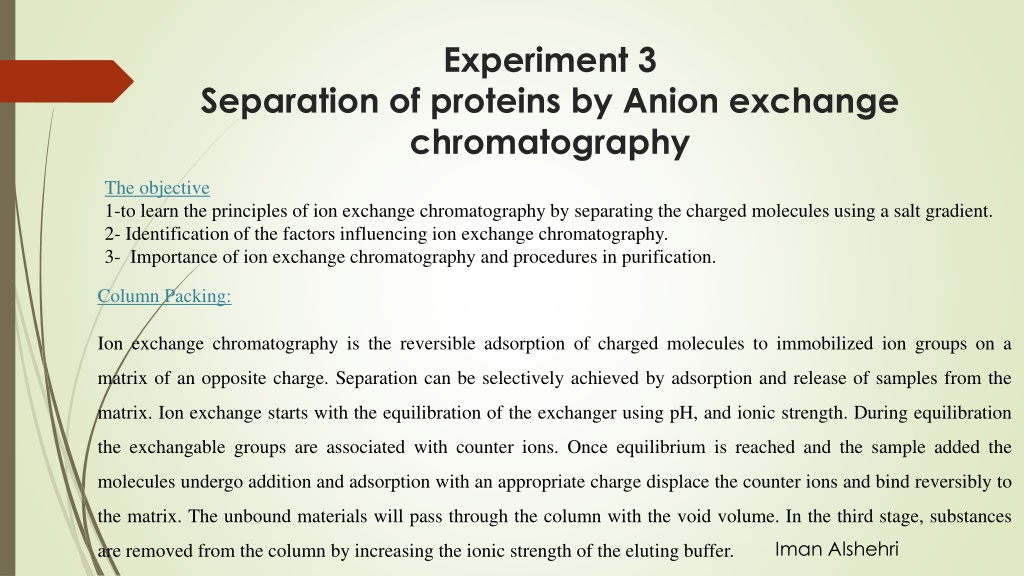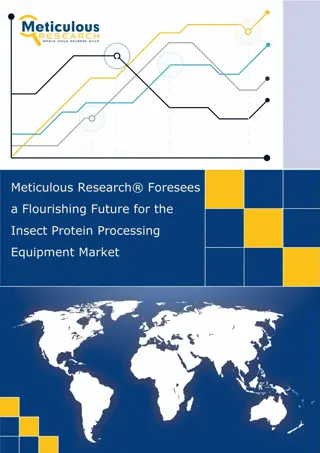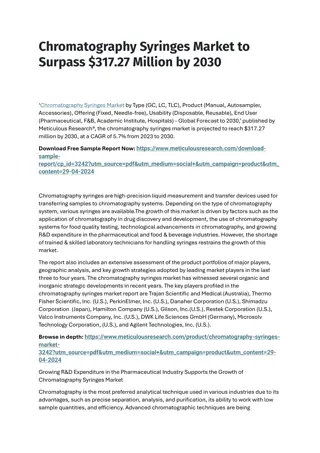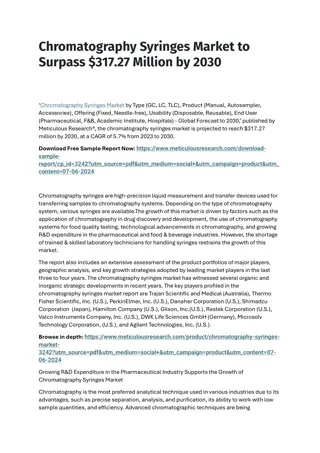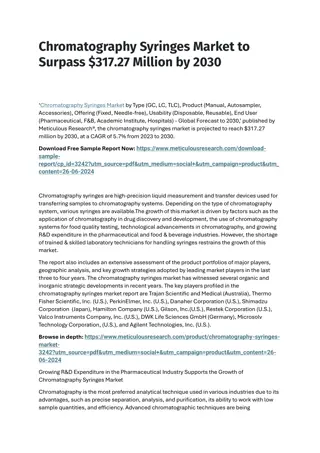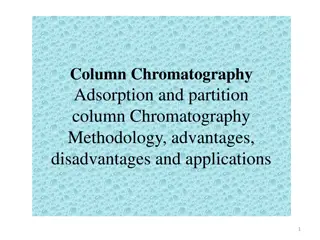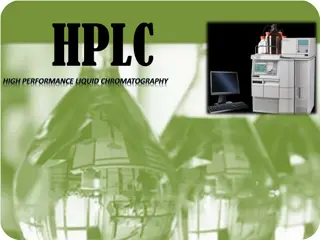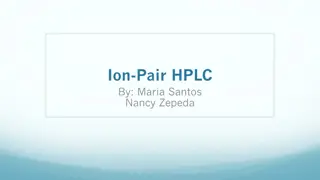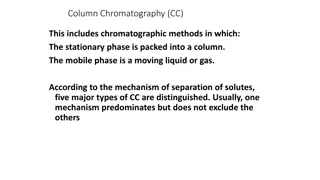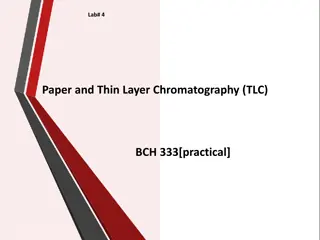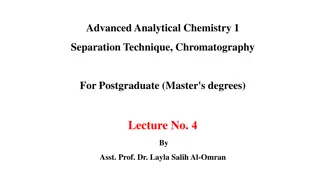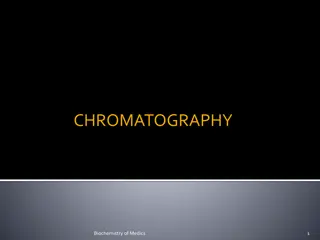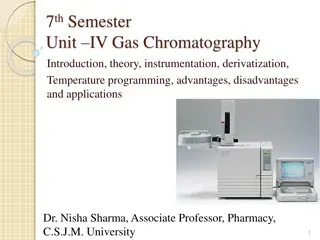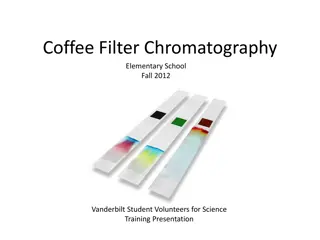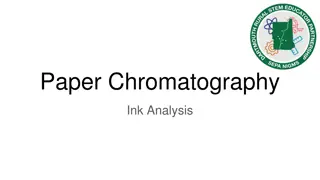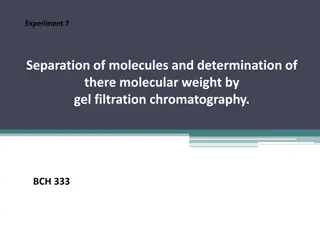Protein Separation by Anion Exchange Chromatography
Anion exchange chromatography is a technique used for separating proteins based on their charge properties. This method relies on differences in surface amino acids to achieve purification. The process involves equilibration, adsorption, and elution using an ion exchange column. By understanding the principles of ion exchange chromatography, one can effectively separate proteins and identify key factors influencing the process.
Download Presentation

Please find below an Image/Link to download the presentation.
The content on the website is provided AS IS for your information and personal use only. It may not be sold, licensed, or shared on other websites without obtaining consent from the author.If you encounter any issues during the download, it is possible that the publisher has removed the file from their server.
You are allowed to download the files provided on this website for personal or commercial use, subject to the condition that they are used lawfully. All files are the property of their respective owners.
The content on the website is provided AS IS for your information and personal use only. It may not be sold, licensed, or shared on other websites without obtaining consent from the author.
E N D
Presentation Transcript
Experiment 3 Separation of proteins by Anion exchange chromatography The objective 1-to learn the principles of ion exchange chromatography by separating the charged molecules using a salt gradient. 2- Identification of the factors influencing ion exchange chromatography. 3- Importance of ion exchange chromatography and procedures in purification. Column Packing: Ion exchange chromatography is the reversible adsorption of charged molecules to immobilized ion groups on a matrix of an opposite charge. Separation can be selectively achieved by adsorption and release of samples from the matrix. Ion exchange starts with the equilibration of the exchanger using pH, and ionic strength. During equilibration the exchangable groups are associated with counter ions. Once equilibrium is reached and the sample added the molecules undergo addition and adsorption with an appropriate charge displace the counter ions and bind reversibly to the matrix. The unbound materials will pass through the column with the void volume. In the third stage, substances Iman Alshehri are removed from the column by increasing the ionic strength of the eluting buffer.
principle: Separation and purification of proteins using ion exchange chromatography is based primarily on differences in the ionic properties of surface amino acids. Exposed arginine, histidine, and lysine residues are generally positively charged and aspartic acid and glutamic acid residues possess a negative charge at neutral pH. Thus at a given ph, a protein will possess an overall net charge. At a lower pH, the net charge will be more positive + At a higher pH, the net charge will be more negative - The pH at which the positive charges equal the negative charges (in other words, the net charge of the protein is zero) defines that protein s isoelectric point (PI). For IEC, a good rule to follow when separating a protein whose isoelectric point is known is to select a working pH which is 1 unit away from the PI of the protein. At this pH, the protein will possess a high enough net charge to bind well to the ion exchange column.
Stages Set up column pour column Load ample on to column adsorption Wash unbounded off column Elution
